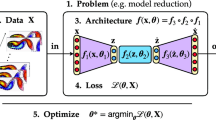Summary
The 59-day Skylab III earth-orbital mission carried an experiment designed to observe the effects of zero-gravity on a strain of diploid human embryonic lung cells, WI-38. The experiment (NASA Exp. No. S015) was performed in a miniaturized, fully automated tissue-culture laboratory package called the Woodlawn Wanderer Nine. The package, which weighed less than 10 kg, photographed two perfused cultures for 28 days using phase-contrast microscopes and 16-mm time-lapse cameras; fixed 10 perfused cultures in gluteraldehyde one at a time over a 12-day period; and returned to earth eight perfused cultures in a viable state for subsequent subculture and study. Two ground control experiments using specimens from the same clone were run simultaneously with the flight experiment in identical packages. The controls were subjected to simulated flight vibration profile within an hour after spacecraft liftoff. All packages were sealed at 1-atmosphere pressure. Analysis of the flight and control films showed no differences in mitotic index, cell cycle or migration rates. Growth curve, DNA microspectrophotometry, phase microscopy and ultrastructural studies on the fixed cultures revealed no effects of zero-gravity. Karyotyping and chromosome-banding studies were performed on subcultures of the returned viable cells and these showed no significant differences from the controls. Minor unexplained differences were found in the biochemical constituents of the spent media of the flight and control experiments. Within the limits of this, experimental design it was found that the zerogravity environment produced no detectable effects on WI-38.
Similar content being viewed by others
References
Knight, T. A.. 1806. On the direction of the radical and germen during the vegetation of seeds. Philos. Trans. R. Soc. London. 96: 99–108.
Pfluger, E. F. W.. 1883. Uber den einfluss der schwerkraft auf die theilung der zellen. Arch. Gesammte Physiol. Menschen Thiere 31: 311–318.
Harvey, E. N., and A. L. Loomis. 1930. Scientific apparatus and laboratory methods: A microscope centrifuge. Science 72: 42–44.
Allen, R. D.. 1960. The consistency of ameba cytoplasm and its bearing on the mechanism of ameboid movement. II. The effects, of centrifugal acceleration observed in the centrifuge microscope. J. Biophys. Biochem. Cytol. 8: 379–397.
Allen, R. D., and J. D. Roslansky. 1959. The consistency of ameba cytoplasm and its bearing on the mechanism of ameboid movement. I. An analysis of endoplasmic velocity profiles of chaos chaos. J. Biophys. Biochem. Cytol. 6: 437–446.
Harvey, E. N., and D. A. Marsland. 1932. The tension at the surface of amoeba dubia with direction observations on the movement of cytoplasmic particles at high centrifugal speeds. J. Cell. Comp. Physiol. 2: 75–97.
Heilbrunn, L. V., and K. Daugherty. 1932. The action of sodium, potassium, calcium and magnesium ions on plasmagel ofAmoeba proteus. Physiol. Zool. 5: 254–274.
Matthews, B. H. C. 1953. Adaptation to centrifugal acceleration (abstr.). Proceedings of the Physiological Society, July 24–25, 1953. J. Physiol. 122: 31.
Wunder, C. C. 1962. Survival and growth of organisms during lifelong exposure to high gravity. Aerosp. Med. 33: 355–356.
Montgomery, P. O'B., F. Van Orden, and E. Rosenblum. 1963. A relationship, between growth and gravity in bacteria. Aerosp. Med. 34: 352–354.
Montgomery, P. O'B., J. Cook, and R. Frantz. 1965. The effects of prolonged centrifugation onAmoeba proteus. Exp. Cell Res. 40: 140–142.
Palade, G. E. 1952. A study of fixation for electron microscopy. J. Exp. Med. 95: 285–298.
Reynolds, E. S. 1963. The use of lead citrate at high pH as an electron opaque stain, in electron microscopy. J. Cell. Biol. 13: 208–212.
Anderson, T. E. 1951. Techniques for the preservation of 3-dimensional structure in preparing specimens for the electron microscope. Trans. N. Y. Acad. Sci. 13: 130–134.
Dixon, K. P., and J. H. Holmes. 1962. Teaching slide preparations of urinary sediment. Am. J. Clin. Pathol. 38: 444–446.
Shiraishi, Y., and T. H. Yosida. 1972. Banding pattern analysis of human chromosomes by use of a urea treatment technique. Chromosoma 37: 75–83.
Seabright, M. 1972. The use of proteolytic enzymes for the mapping of structural rearrangements in the chromosomes of man. Chromosoma 36: 204–210.
Stefos, K., and F. E. Arrighi. 1971. Heterochromatic nature of W chromosome in birds. Exp. Cell Res. 68: 228–231.
Bartels, P. H., G. F. Bahr, J. Griep, H. Rappaport, and G. L. Wied. 1969. Computer analyses of lymphocytes in transformation. A methodologic study. Acta Cytol. 13: 557–568.
Bartels, P. H., G. F. Bahr, and G. L. Wied. 1970. Information theoretical approach to cell identification by computer. In: G. L. Wied, and G. F. Bahr (Eds.),Automated Cell Identification and Cell Sorting. Academic Press, New York, pp. 361–384.
Rogers, T. D., V. E. Scholes, and H. E. Schlichting, Jr. 1972. Rapid scanning microspectrophotometry of colorlessEuglena grucillis and Astoria longa. A basis for differentiation. J. Protozool. 19: 150–155.
Wied, G. L., P. H. Bartels, G. F. Bahr, and D. C. Oldfield. 1968. Taxonomic intra-cellular analytic system (TICAS) for cell identification. Acta Cytol. 12: 180–204.
Wied., G. L., G. F. Bahr, and P. H. Bartels. 1970. Automated analysis of cell images by TICAS. In: G. L. Wied, and G. F. Bahr (Eds.),Automated Cell Identification and Cell Sorting. Academic Press, New York, pp. 195–360.
Pool, C. R. 1973. Prestaining oxidation by acidified H2O2 for revealing Schiff-positive sites in Epon-embedded sections. Stain Technol. 48: 123–126.
Lipetz, J., and V. J. Cristofalo. 1972. Ultrastructural changes accompanying the aging of human diploid cells in culture. J. Ultrastruct Res. 39: 43–56.
Author information
Authors and Affiliations
Rights and permissions
About this article
Cite this article
Montgomery, P.O., Cook, J.E., Reynolds, R.C. et al. The response of single human cells to zero gravity. In Vitro 14, 165–173 (1978). https://doi.org/10.1007/BF02618218
Issue Date:
DOI: https://doi.org/10.1007/BF02618218




